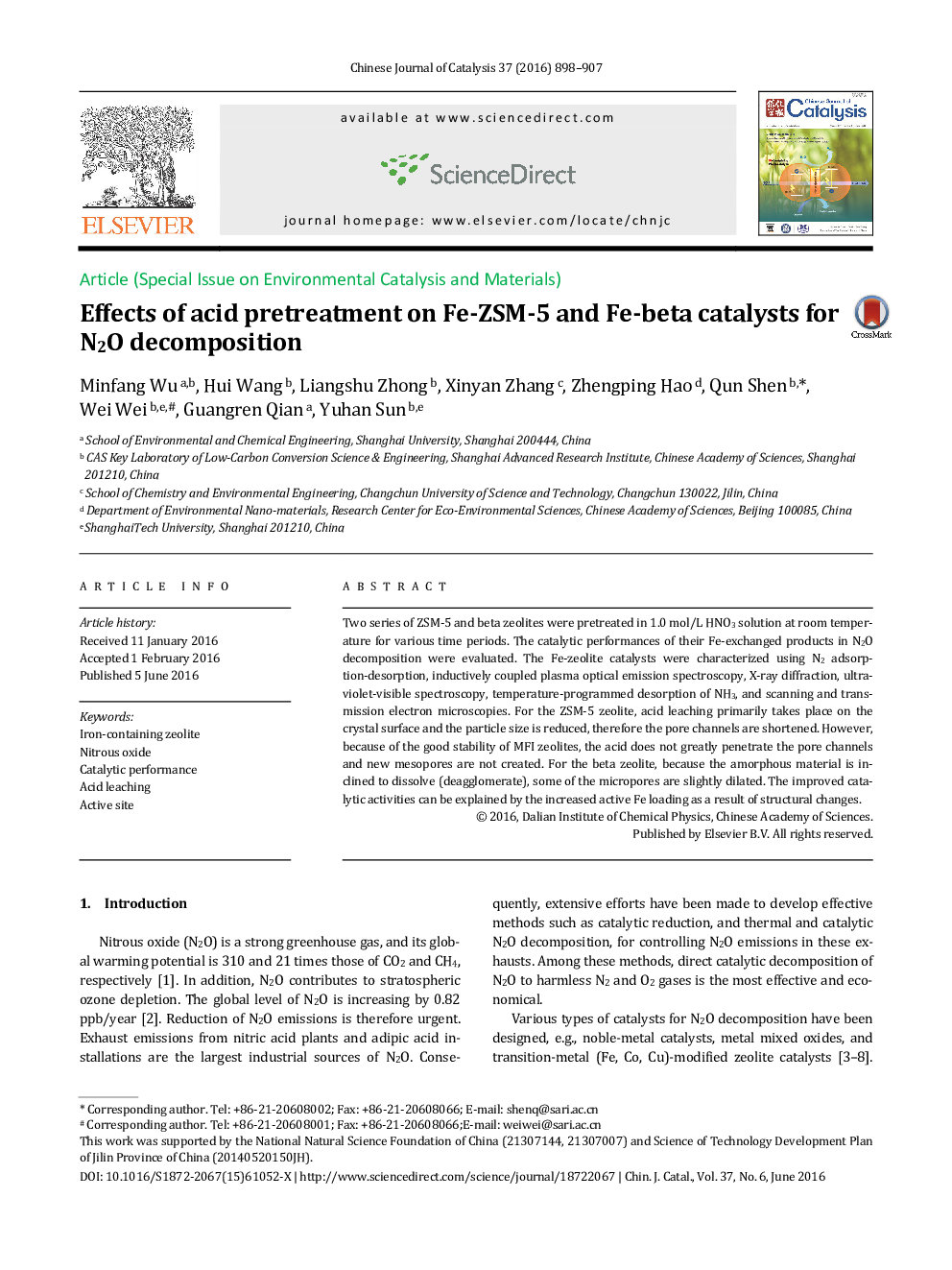| Article ID | Journal | Published Year | Pages | File Type |
|---|---|---|---|---|
| 59588 | Chinese Journal of Catalysis | 2016 | 10 Pages |
Two series of ZSM-5 and beta zeolites were pretreated in 1.0 mol/L HNO3 solution at room temperature for various time periods. The catalytic performances of their Fe-exchanged products in N2O decomposition were evaluated. The Fe-zeolite catalysts were characterized using N2 adsorption-desorption, inductively coupled plasma optical emission spectroscopy, X-ray diffraction, ultraviolet-visible spectroscopy, temperature-programmed desorption of NH3, and scanning and transmission electron microscopies. For the ZSM-5 zeolite, acid leaching primarily takes place on the crystal surface and the particle size is reduced, therefore the pore channels are shortened. However, because of the good stability of MFI zeolites, the acid does not greatly penetrate the pore channels and new mesopores are not created. For the beta zeolite, because the amorphous material is inclined to dissolve (deagglomerate), some of the micropores are slightly dilated. The improved catalytic activities can be explained by the increased active Fe loading as a result of structural changes.
Graphical AbstractFor ZSM-5, acid leaching first occurs on the crystal surface and the crystal size is reduced; for beta, the amorphous material is first dissolved and some micropores are widened.Figure optionsDownload full-size imageDownload as PowerPoint slide
